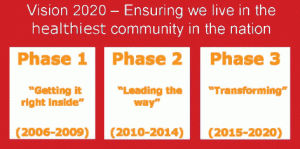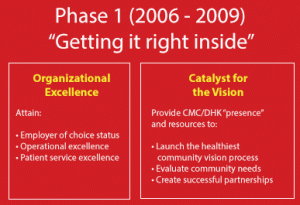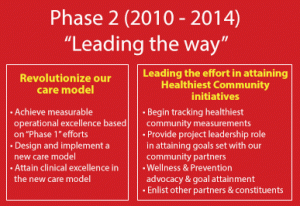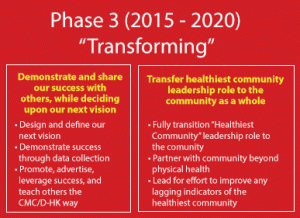Tad Dwyer Consulting's strategic planning is a unique organizational transformation and strategy design and roll out framework characterized by its "phased" approach to achieving desired outcomes. They've partnered with dozens of organizations to provide strategic solutions to even the most “wicked” problems. One client credits the process with enabling its organization to "thrive despite the once imminent threat of failure."
Below are examples of how strategic planning was successfully rolled out at two organizations with very different needs.
Case Study 1
Commercial Refrigeration Company
Problem/Situation: Voluntary turnover for Technicians and Managers over 50% impacting profitability and service levels.
Solution: Facilitated organization design improvements (including succession planning) and implemented company-wide learning center delivered through a variety of mediums.
Results: After implementation, voluntary turnover reduced to under 10% with employees participating in succession planning regularly promoted into leadership positions.
“Tad is a highly talented OD expert and guided my company’s executive leadership through a number of organizational restructuring events and other change initiatives. He is able to explain complex models and provide relevant examples to guide teams through design and implementation of organizational designs and change. His highly organized approach provides structure and process for difficult implementations and his personable style aids in building confidence and trust.”
Senior Vice President, Human Resources
‘Tad designed and created a world class training and development center for our company that focused on leadership development, technical training, and organization development. His leadership and insight helped the organization create a unique workplace culture based on values and high performance. Tad is a brilliant organization development executive, and was key to our success."
Chief Executive Officer
Case Study 2
Hospital & Clinic
Problem/Situation: Hospital and Clinic needed a framework to make its community wide vision, ensuring we live in the healthiest community in the nation, a reality.
Solution: Creation and roll out of a phased framework for realizing and living the vision.

Results: Continuous improvement and focus on the success factors identified in the framework as exemplified in the article I wrote below.
The Power of Vision: Strategic Planning at Cheshire Medical Center Dartmouth Hitchcock Keene
by Tad Dwyer, M.Ed.
How can a hospital (or clinic) possibly chart a clear course for the future when healthcare is surrounded by whitewater political, technological and social change? This is the question that Art Nichols and Dr. John Schlegelmilch set out to answer as their first major challenge together as Co-Presidents for Cheshire Medical Center/Dartmouth Hitchcock Keene (CMC/D-HK). The key to answering the question came in the form of deciding upon a compelling guiding vision (defined as the desired future state an organization wishes to achieve) and then carefully choosing the most important strategic initiatives the organization would engage in to attain the vision CMC/D-HK is a clinic and hospital located in Keene, New Hampshire that welcomes approximately 450,000 patient visits per year, mainly from residents of Cheshire and Sullivan counties. Both John and Art were in their positions less than a year when they began leading the organization in the design of its strategic plan. For several years, the organization had rallied behind an effort to unite the hospital and clinic as one entity. With that vision essentially realized, it was ready for the next phase in building an outstanding healthcare facility.
The co-presidents debated with the organization’s full leadership team and board various desired futures that CMD/D-HK could pursue. Ultimately, a vision of “ensuring we live in the healthiest community in the nation” was adopted. With the vision (playfully dubbed vision 20/20) decided and the help of many within the organization, Schlegelmilch and Nichols led an effort to create a phased road map to attain it. See Figure A.

Figure A. Vision Road Map
Using a phased approach can help gauge progress en route to attaining visions, especially those that call for a radical transformation in what the organization will deliver or become in the future. Three such phases emerged during CMC/D-HK’s strategic planning process. The first phase - “Getting it Right Inside” - calls for the enterprise to adopt two key strategic initiatives: achieve organizational excellence and become a catalyst for launching the vision by engaging others within and outside the hospital and clinic. See figure B below.

Figure B. Phase 1
In a discussion about the strategic planning process, Dr. Schlegelmilch pointed out that “Once set, having a vision really helps. It puts things in place.” The vision and the phases moving toward help in making day-to- day decisions that can lead to attaining the vision even more quickly than planned. John and Art used the following example to illustrate this point. “CMC/D-HK had (and has since seized) an opportunity to become a leader in geriatric care by hiring a Geriatrician.(for the first time?) Q: How does that fit with the vision? A: Perfectly. We jumped into phases two and three with that decision.” In this last quote, John and Art describe one of the key “gifts” that comes as the result of having a well-designed strategic plan. That is the ability to see how decisions made now will ultimately make the vision a reality, perhaps even sooner than planned. Figures C and D below describe the strategic initiatives involved in phases two and three.

Figure C. Phase 2

Figure D. Phase 3
Nichols and Schlegelmilch know that implementing the plan will not be an easy journey. The success of translating any plan to action depends upon how the plan is communicated and how people are involved in the effort. Art discussed their communication plan during our recent dialogue, telling me that he and Dr. Schlegelmilch offered to discuss the vision at departmental meetings and really will do so at any opportunity they have been given. The organization has taken them up on the request. Art and John have since made several presentations within the organization, and the offers continue to come.
It was my pleasure to act as facilitator for this plan, and as such I saw first hand Art’s and John’s willingness and ability to share its creation with those inside and outside the organization. I got to see a transformation occurring within the organization. In the past, CMC/D-HK could rightfully see other hospitals and clinics as competitors. Now, collaboration is the mindset. As of the printing of this article, CMC/D-HK was entering into an agreement with Springfield Hospital to share oncology services. John and Art told me they doubt this would have happened prior to the setting the vision.
Now, when asked why they are making a particular decision, Art and John consistently say: “Because it is the right thing to do.” It gives me comfort to live in the community whose local health care facility has this vision. I have no doubt that CMC/D-HK will achieve their vision and thus make this community a stronger, healthier place to live.
